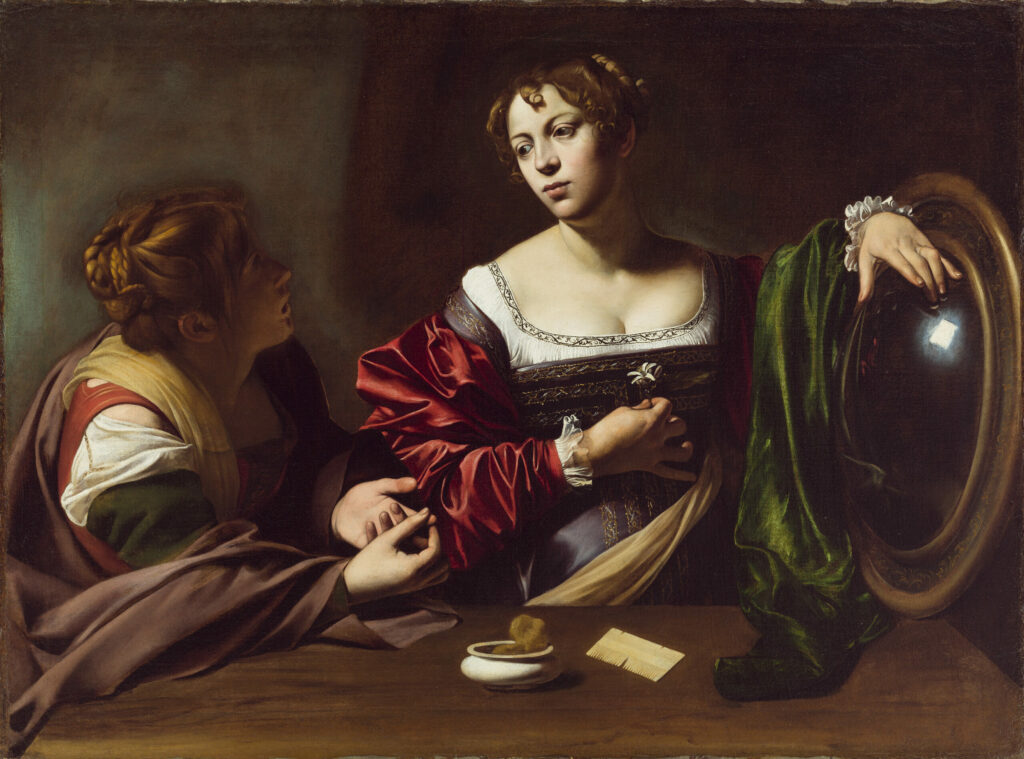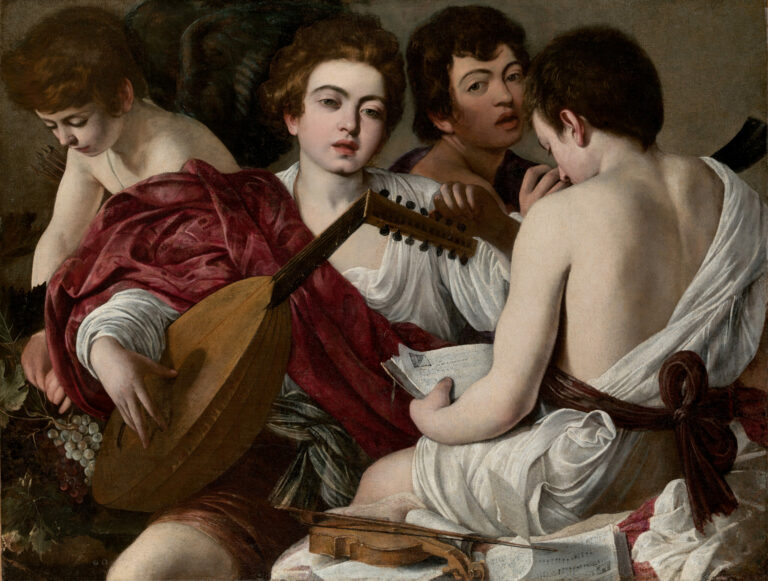
Martha and Mary Magdalene: A Silent Dialogue Between Sin and Redemption. In this striking 1598 masterpiece, Caravaggio plunges us into a moment of profound spiritual tension. The Lombard painter transforms the Gospel episode into an intimate theater where the destiny of the human soul unfolds.
The composition, deceptively simple, reveals the master’s complete command of chiaroscuro. Martha, humble and unadorned, emerges from shadow like a guardian angel. Mary Magdalene, a courtesan in sumptuous attire, becomes under Caravaggio’s brush a Christ-like figure in transformation. Her gaze, tinged with haunting melancholy, already seems to bear the weight of her future conversion. The mirror, traditional symbol of vanity, transforms into an emblem of self-awareness, while the orange blossom she delicately holds announces her restored purity.
Learn More
- Martha and Mary Magdalene, c. 1598, by Michelangelo Merisi da Caravaggio
- 39 3/8 × 52 15/16 inches (100 × 134.5 cm)
- Detroit Institute of Arts, European Paintings (not on display)
- https://dia.org/collection/martha-and-mary-magdalene-36204
Michelangelo Merisi da Caravaggio (1571-1610) revolutionized European art through his striking realism and chiaroscuro technique. Trained in Lombardy, he established himself in Rome around 1595 as the undisputed master of an innovative style that dissolved boundaries between sacred and profane, painting saints and madonnas with the faces of common Romans.
His volatile temperament, which led to numerous legal troubles, paradoxically nourished his art with profound truth. He shattered his era’s aesthetic codes by abandoning Mannerist idealization for a direct approach to the human condition.
His flight from Rome in 1606, after killing a man in a brawl, marked the beginning of a tragic wandering. Dead at 38, he left behind a dazzling body of work that would inspire generations of artists.

